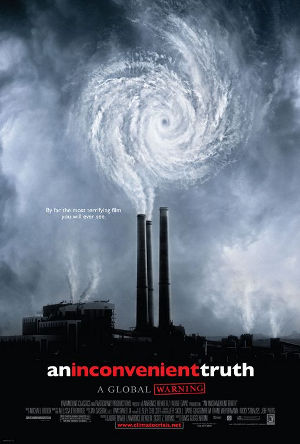Here’s a new feature from the folks at RazorFine trying our best to share our wisdom with Hollywood. As we view the mass amount of media we are bombarded with daily we notice some disturbing trends and fads that seem to be occurring in Hollywood. These letters are an attempt to let someone with the power and the intelligence in the industry stop such actions before they destroy us all. In our first letter we examine – The Comic Book Movie.
Dear Hollywood, with Regards to Comic Book Movies
N/A
With the recent disasters of Elektra, Catwoman, Fantastic Four, and X-Men: The Last Stand, the disappointment of V for Vendetta, and the seemingly ominous return of big blue boy scout in a couple of weeks, we sit down to look at what’s wrong with the merging of Hollywood and comics that leads fans to start slashing and burning their collections. In this letter we hope to provide some guidelines (7 simple rules you might say) to help studio execs avoid experiences like the Dolph Lundgren Punisher (or for that matter the Thomas Jane Punisher – let’s just stop making Punisher films, okay?).
Dear Hollywood,
It has come to our attention despite successes like Spider-Man 2, Sin City, A History of Violence, and Unbreakable you seem to be struggling with adapting comic books into theatrical films. We at RazorFine love us some comics so in an attempt to help you out (and avoid disasters like Fantastic Four and Batman and Robin) we offer the following suggestions and guidelines to help insure both the studio and the fanbase can have a pleasant experience at the theater watching over-muscled men and women in spandex save the day.
1. Don’t “re-interpret” the character
One of the biggest issues today is the director or writer coming up with a “brilliant” idea to re-interpret the hero into a more modern or more accessible figure. Yeah, I’m talking to you Ang Lee. The characters and origins are what help define the character and give them the coolness and charm we enjoy. If you tamper with the balance even slightly by having Dr. Doom be present and mutated by the cosmic rays, or the Joker responsible for the death Thomas and Martha Wayne, or turn Bruce Banner’s tragedy into a science experiment by his dad, then the character itself is changed as a result (and often horrifically). Aaron and I disagree about Ang Lee’s Hulk which I strongly dislike for Lee’s re-interpretation of the character by taking away the responsibility and pathos of Bruce Banner by making the accident and the experiment not his fault. How would you have liked it if Raimi had made Peter Parker into Norman Osborne’s son and ol’ Norman experimented on him as a child making him Spider-Man and then Norman went crazy and fought him as the Green Goblin? Would that have made a good film? Probably not, but no matter how it turned out it wouldn’t really be Spider-Man. Say what you want about Daredevil, and it has plenty of flaws, but at least they got the characters right.
2. Don’t mess with the costumes

Yeah, I’m talking to you Tim Burton, Christopher Nolan, Bryan Singer, et all. Look at the middle pic – it’s a classic Neil Adams Batman pose and that’s what he should look like. You notice Hollywood in five tries still hasn’t found a way to capture that look? He’s not Iron Man, nor is he the incredible rubber guy. He doesn’t need to take shotgun blasts in the stomach and get up. He’s Batman. He’s in the shadows. He’s stealthy, he’s athletic, and he can actually turn his neck while in costume. And what’s with the missing eye-lenses and all that black make-up which miraculously disappears when he yanks off that big rubber cowl? Here I’ll give huge props to Sam Raimi (Spider-Man) and Richard Donner (Superman) for getting the main costumes so right. However even they took mis-steps with the look of Zod and the black costume in Spidey 3 (which is sad because it is one of the coolest super-hero costumes of all time).

3. Quality over Quantity
Not every comic book character deserves to be made into a film. I don’t care if you personally love Speedball or Jubilee – they don’t deserve their own films; nor do films on characters such as Ant-Man and Power Pack (both in development) need to be made. All of the following are in some level of production from script stage to casting to scouting locations – Fantastic Four 2, Black Panther, Captain America, Iron Man, Cloak and Dagger, Magneto, Deathlock, The Flash, Green Lantern, Hellboy 2, Hawkeye, Iron Fist, Sin City 2, Submariner, Teenage Mutant Ninja Turtles, Wonder Woman, The Green Hornet, Shazam!, Astro City and The Watchmen. And there are many more. Quality over quantity is the mantra you should learn; please choose wisely.
4. In film, looks matter

Jessica Alba as Sue Storm?! Are you freakin’ kidding me? Yeah I could buy her as a stripper in Sin City but there’s not enough booze and drugs on the planet to make me accept her as a scientist. Even Sam Raimi makes mistakes with the casting of Kirsten Dunst as red headed bombshell supermodel Mary Jane Watson. And Jennifer Garner as the raven haired Greek assassin Elektra? Um…yeah, sorry but I just don’t see it. The first order of business, it would seem to me, would see to be examine what the characters look like in the comics and then try and find actors that match up. Yes it may take more work than just calling a couple agents or actors you like to work with but the effect is much better. Take a look at the result in Sin City where casting was done to match the character on-screen to that in the novels understanding that preserving the look of the characters and their surroundings is integral in capturing the power of the comic. So to Brian Singer I have to say kudos for James Marsden, Hugh Jackman and Patrick Stewart but I laugh at his choice of Anna Paquin as the voluptuous kick-ass sexpot Rogue and we won’t even discuss Ratner’s X3.

5. Respect the Super-Hero world
A world where super-heroes exist is different from the world you look out at from your office cubicle every day. We as comic fans accept this much as fans of The X-Files or Star Trek accept those realities. Do your research and capture the feel of a world where men can leap tall stories in a single bound or catch thieves just like flies with a web of any size.
6. Respect the audience
In comic books Hollywood has a built in fanbase for the character and tons of ready market promotions just waiting. Just because these things exist doesn’t mean the filmmakers can slack off for the film or critics can dismiss it as “just a comic book film.” Much to the contrary studios should break their backs trying to get the characters right on-screen. Comic book fans, even die-hard ones, will only go see sub par comic book movies for so long before they stop going to any of them. We know these characters better than some people know their friends or family. We’ve grown up with them and for many of us they’ve taught us life lessons and the value of reading, art, and in a few circumstances higher level thinking about ideas such as drugs, racism, poverty, death, crime, love, loss, and so much more. A few more entries like Fantastic Four and X3 might just do what no amount of bullying or nagging could make these self-pronounced geeks do – grow up and move on.
7. Keep the following people away from such projects
Richard Bowman, Michael France, Mark Frost, Sidney J. Furie, Mark Goldblatt, Akiva Goldsman, Jonathan Hensleigh, Simon Kinberg, Lawrence Konner, Ang Lee, Richard Lester, Raven and Ryan Metzner, David Odell, Zak Penn, Pitof, Theresa Rebeck, John Rogers, Mark Rosenthal, Joel Shumacher, Jeannot Szwarc, Tim Story, Boaz Yakin, and Stu Zicherman.

 An Inconvenient Truth is the single most important film of the 2006. Global Warming is real and it’s happening right in front of us – despite what the nice man who sold you your Hummer lead you to believe. In fact the signs are becoming so evident that the younger generation is looking to the older with increasing skepticism and questions on how they could let such a thing happen (and are still allowing it to continue). This is the first of two important documentaries that looks at the problems of our culture and solutions that are both being ignored by those with deep pockets who want to squeeze every last red cent out of the Oil Industry and the planet before even contemplating change (the second Who Killed the Electric Car? will be out by the end of the month).
An Inconvenient Truth is the single most important film of the 2006. Global Warming is real and it’s happening right in front of us – despite what the nice man who sold you your Hummer lead you to believe. In fact the signs are becoming so evident that the younger generation is looking to the older with increasing skepticism and questions on how they could let such a thing happen (and are still allowing it to continue). This is the first of two important documentaries that looks at the problems of our culture and solutions that are both being ignored by those with deep pockets who want to squeeze every last red cent out of the Oil Industry and the planet before even contemplating change (the second Who Killed the Electric Car? will be out by the end of the month).





